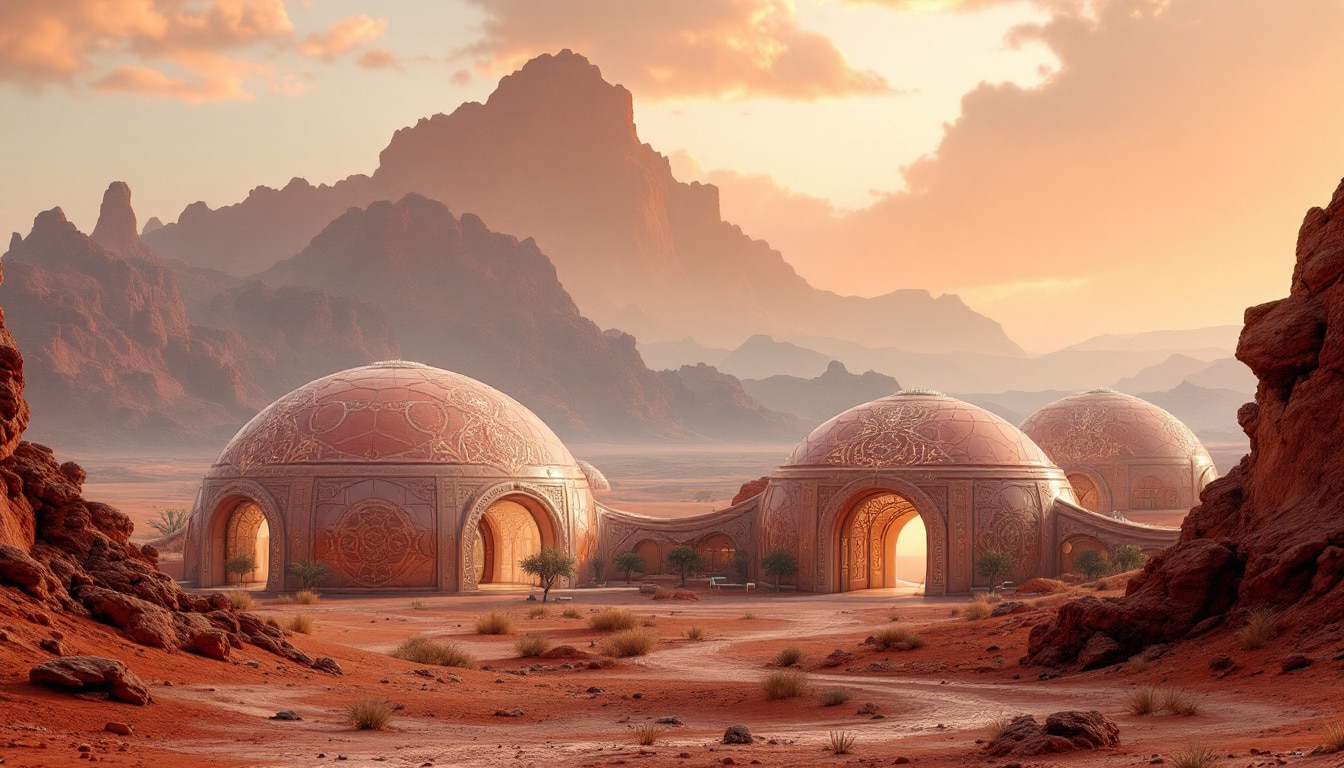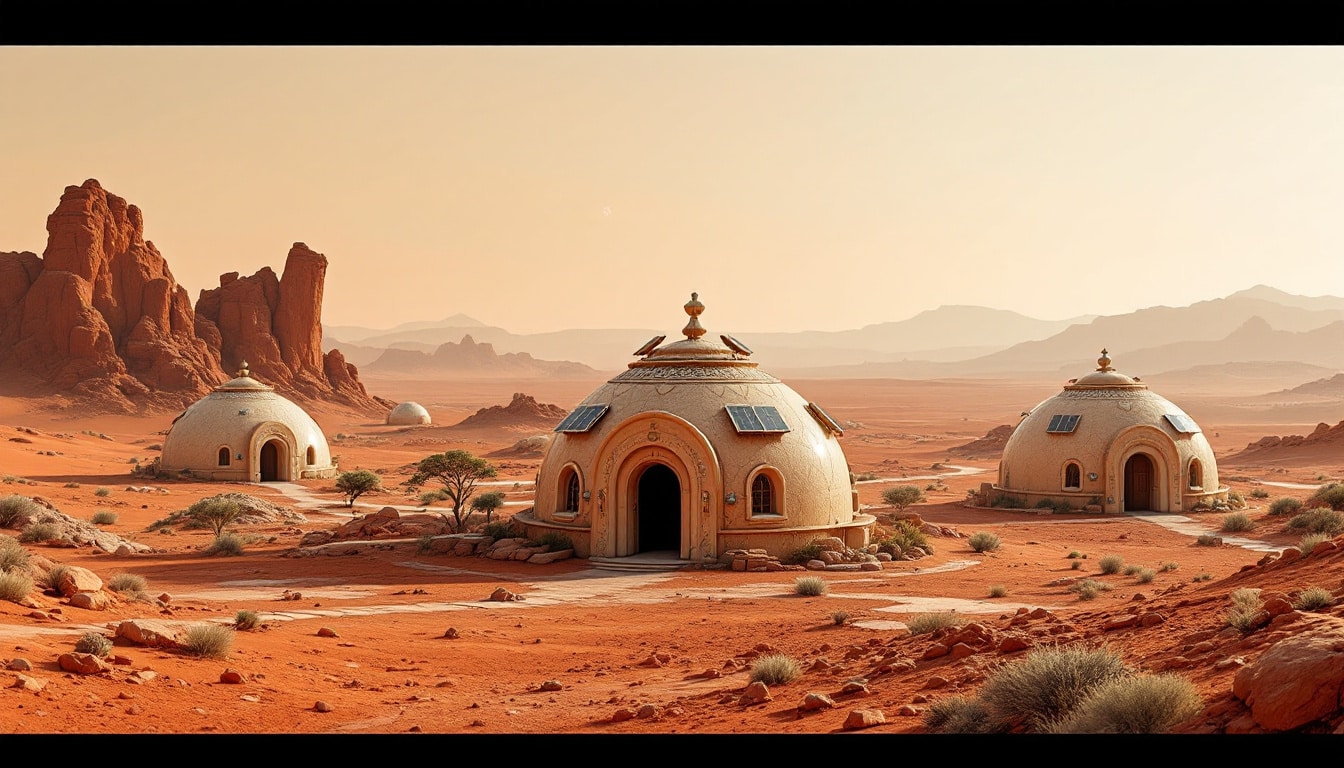On Mars, the search for innovative solutions to establish human colonies takes a surprising turn. Drawing inspiration from the practices of Ancient Rome, scientists propose using martian regolith mixed with bodily fluids, such as blood and , to design robust dwellings. This bold approach, considered by Iranian researchers, could revolutionize our way of thinking about space construction, calling on materials that could be described as “bio-creative” to meet the challenges of colonizing the red planet.

Table of Contents
ToggleMartian dwellings made from blood and urine
The colonization of Mars is a topic that generates numerous speculations and research. By drawing on the construction techniques of Ancient Rome, researchers propose an innovative method to build dwellings on the red planet. These researchers from Kharazmi University in Iran envision a material called AstroCrete, a blend of martian regolith and human bodily fluids, such as blood, urine, and even tears. This approach could respond to the challenges of the Martian environment while leveraging organic elements to strengthen the structures.
A technique inspired by Roman builders
The artisans of Antiquity had an extraordinary ability to combine natural materials and organic additives. They notably mixed blood and urine with their mortar to improve its strength. This ancestral construction model is now being revisited by scientists who want to develop a concrete suitable for the harsh conditions of Mars. With the use of urea produced by sweat and other bodily fluids, AstroCrete could provide a viable solution to create durable and resilient habitats on the Martian planet.
Towards a sustainable colonization of Mars
This bold project raises ethical and practical questions about the use of human resources for extraterrestrial constructions. However, the potential benefits of this method are numerous. By integrating organic materials into the composition of Martian bricks, settlers could develop a self-sufficient habitat on Mars. Beyond technical innovation, this approach could contribute to a new form of environmentally friendly colonization of the Martian environment, while drawing inspiration from ancient practices that have proven successful over the centuries.
















